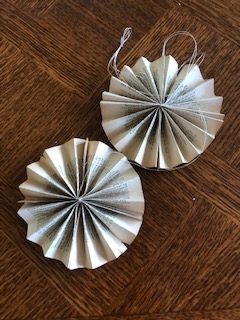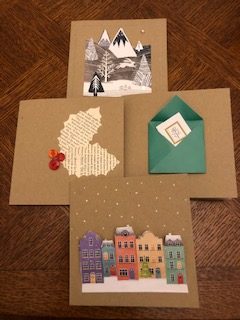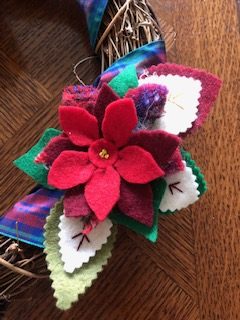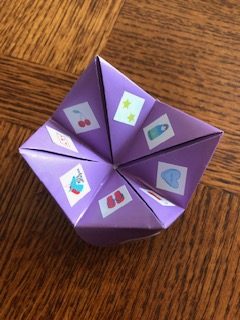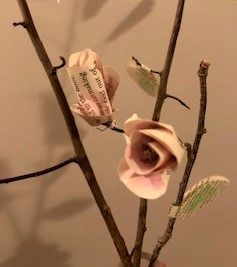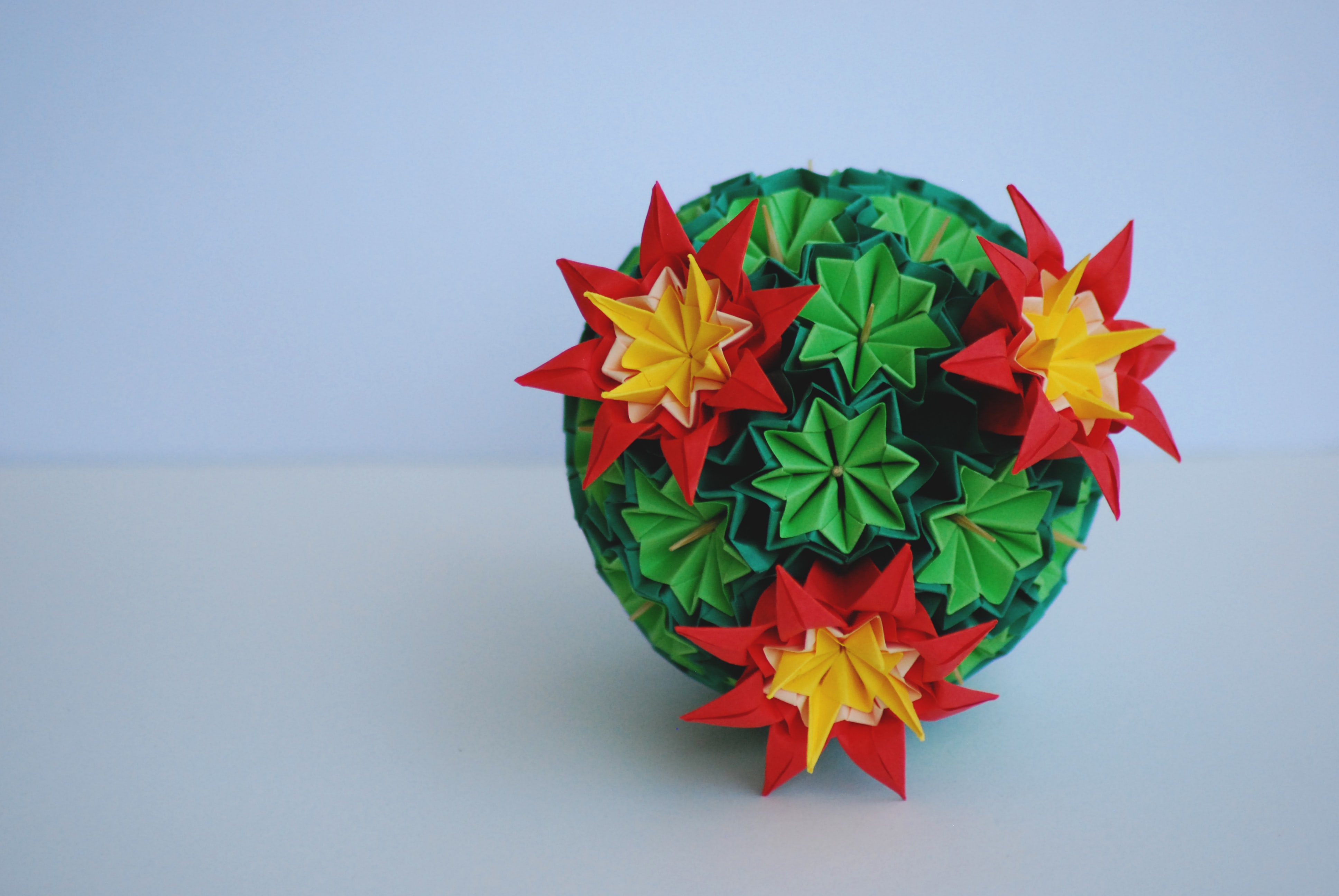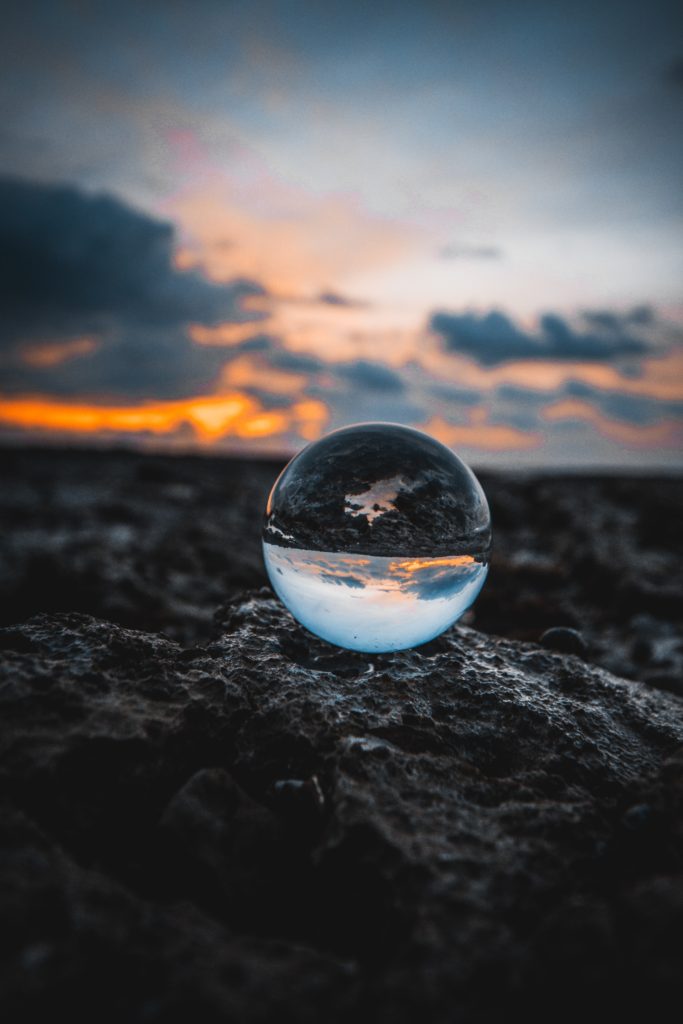After yet another week of sad news, I really needed to do something to cheer myself up. Lack of sleep and general low mood meant that my brain was sluggish and my enthusiasm for new projects rather low.

Craft group morning arrived, and I needed something to do – something that the most weary soul could master and still hold some sort of conversation. Having shown my husband at the weekend how to use magazine pages to make a mood board, I thought that I could manage something like that too.
An artist’s solution
Julia Cameron in The Artist’s Way recommends doing collages regularly to focus one’s intention. It works both as a meditation and as an unedited (by the thinking brain) route to work out what you really want in life.
We have no shortage of magazines, so Monday morning I simply pulled images that I loved from their pages, sometimes cutting neatly and sometimes not so much.

Simply looking at these attractive images was enough to lift my spirits, and I was able to host and chat happily too. By the time my guests had left, I had a great heap of pictures waiting to be put to good use.


I had numerous gorgeous nature pictures from Country Living magazine, but the ones which really enthralled me were from my art magazine Uppercase.
Time to get to work
After a nap, I set about putting the cuttings into subject-based files: nature scenes, homes, vintage and art ideas. Then, and this was the really brilliant part, I just had to start trimming and sticking.
The most wonderful thing about collage is that it requires so few materials: scissors, glue, paper and a little space. Most art projects require heaps of room. As a case in point, I’ve rashly started making a quilted bed runner, and my craft table is strewn with strips of fabric and thread.
This kind of collage is not meant to be a work of art, but rather a work of play. You stick things in, not according to any particular rules, but simply what is pleasing to your eye.
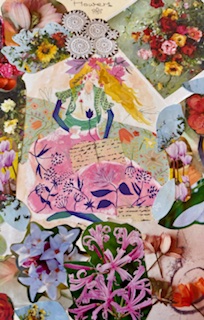
Image: Karen Costello-McFeat
Certain colours and shapes will appeal to you – others not so much. All that matters is that you enjoy the process and hopefully have something fun to show for it.
Revived
All this cutting and sticking certainly reactivated my creative brain – as it is meant to do. Staring at delightful pictures cannot help but lift your mood (just as staring at frightening or depressing ones will do the opposite). And, most importantly, these are illustrations that you have chosen rather than some sinister algorithm. These images inspire rather than invoke cravings.
So, having done my collage, I thought about how I might store the voluminous quantity of extra cutouts! Some I will use again for a collage, others I’d like to use in my journal projects.
My Uppercase magazine had an especially delightful cover made of good quality paper. It would, I convinced myself, make an excellent file.
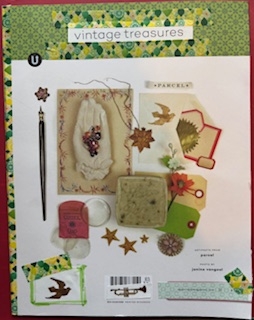
Having created a binding with washi tape, I set about adding a few collage touches to give it less of a commercial look – adding a title from within the magazine, birds and ephemera to obscure the bar codes.
Inside, I used an old calendar sheet to make a pretty pocket for my stash. I think it worked out quite well, and the delicate pages I collected are now safely enclosed.
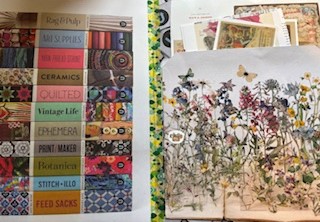
And did the process work to calm my mind? Absolutely! While focussed on simple tasks that were unlikely to frustrate or torment me, I was able to let go (for a while at least) of my worries.
It was also pleasingly productive. I intend to make more little folders for other ephemera, as they are too delicate to shelve without protection.
Most importantly, the activity reminded me of what is important in my life and what I need to pursue with more focus and effort. I love art and I love creating (ideally in nature!) At my age, I am certainly not aiming to be the next Turner prize winner – but art brings me joy and often the bonus of practical objects made by hand.
So if you are wondering what to do next or even in your free time – I highly recommend this exercise. If nothing else, it will give you a chance to unwind and enjoy the playfulness we all enjoyed in primary school!




